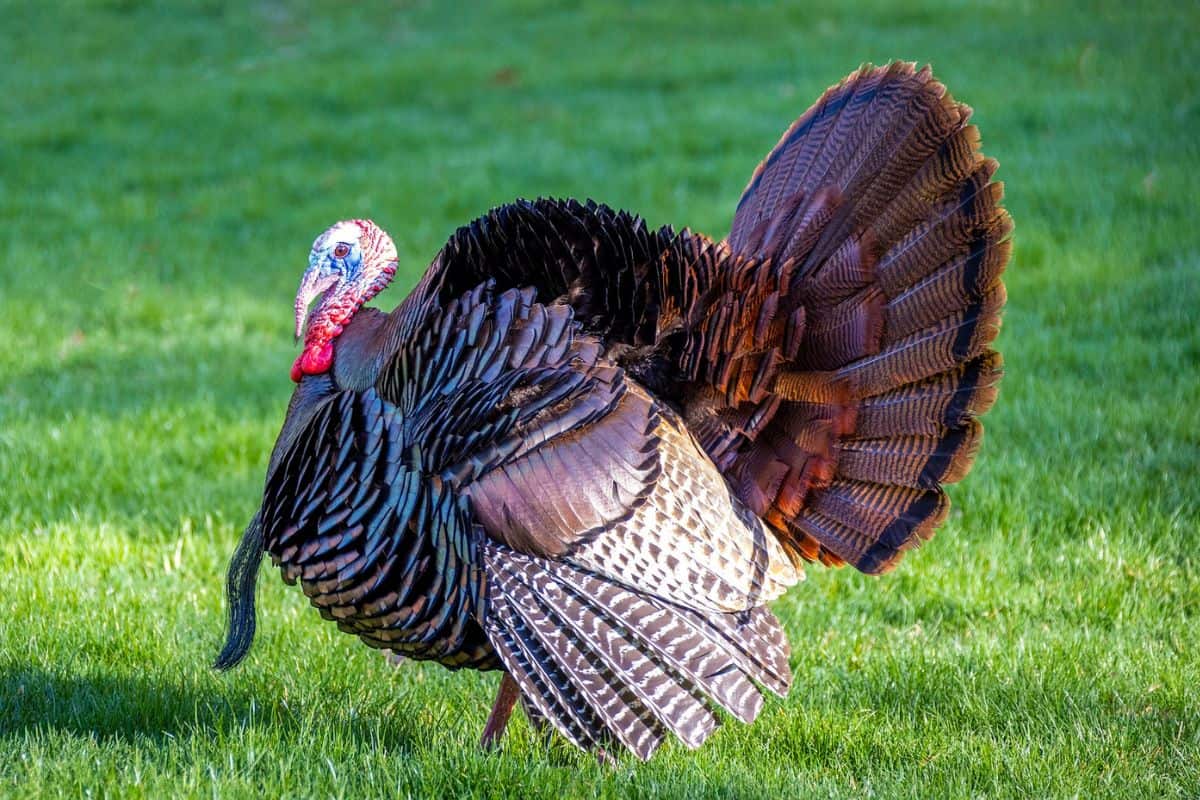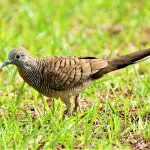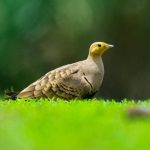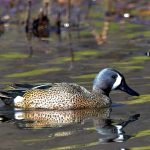Common Name: Wild Turkey
Scientific Name: Meleagris gallopavo| Size | Diet | Range in Hawaii | Status in Hawaii |
|---|---|---|---|
| 48 inches | acorns, nuts, seeds, fruits, insects, and small reptiles or mammals | Big Island, Molokai and Lanai | Least Concern |
The Wild Turkey is a fascinating bird species that is found in North America, known for its distinctive appearance and impressive size. While the Wild Turkey is not native to Hawaii, it has been introduced to the islands on multiple occasions for hunting purposes.
Since then, Wild Turkeys have established populations in certain areas of Hawaii, including the Big Island, Molokai and Lanai. These birds are highly adaptable and have thrived in Hawaii’s unique environment, despite the challenges posed by the islands’ ecosystem.
Wild Turkey’s presence in Hawaii is a testament to its resilience and adaptability, and it is a beloved and popular species among hunters and nature enthusiasts on the islands.
However, Wild Turkey’s introduction to Hawaii has also raised concerns about its potential impact on native bird species and ecosystems, making conservation efforts critical for the continued success of Hawaii’s unique wildlife.
Wild Turkey
Appearance
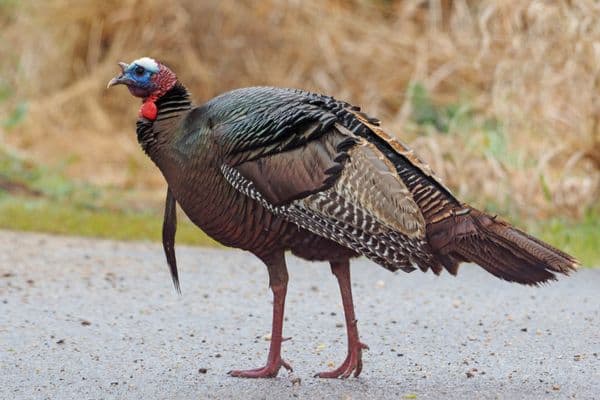
The Wild Turkey is a large and impressive bird species, known for its distinctive and striking appearance. Adult males can measure up to 48 inches (122 cm) in length and have a long, fan-shaped tail that is covered in iridescent feathers, which they can display in an impressive courtship display.
Males also have a bare, red, and blue head with a fleshy wattle that hangs from their neck, called a “snood”. Their bodies are covered in dark feathers with a metallic sheen, while their wings are marked with white and bronze bars.
Females, on the other hand, are slightly smaller, measuring up to 36 inches (91 cm) in length, and have a more muted appearance, with brownish-gray feathers and a smaller, less colorful head.
Diet
The Wild Turkey is an omnivorous bird species with a varied diet. Its diet consists of a mix of plant matter and small animals, including acorns, nuts, seeds, fruits, insects, and small reptiles or mammals. During the spring and summer months, the Wild Turkey feeds mainly on insects, such as grasshoppers and beetles, which provide a good source of protein.
In the fall and winter, the Wild Turkey’s diet shifts towards plant matter, particularly acorns and other nuts. The Wild Turkey is also known to feed on agricultural crops, which has led to conflicts with farmers in some areas.
Behavior
The Wild Turkey is a social bird species that typically lives in flocks or groups, particularly during the winter months. During the breeding season, males will establish dominance hierarchies and compete for the attention of females through elaborate courtship displays, which can include puffing up their feathers, fanning out their tails, and making vocalizations.
Once a male has established dominance, he will mate with multiple females and help to care for the young. Wild Turkeys are also known for their impressive ability to fly, despite their large size.
They can fly at speeds of up to 55 miles per hour (88 km/h) and can travel up to a mile at a time. However, they typically prefer to walk or run on the ground, where they are better able to forage for food and avoid predators.
In addition, Wild Turkeys are known for their keen senses, including their excellent eyesight and hearing. They are highly alert and can quickly detect potential threats, such as predators or humans.
Nesting
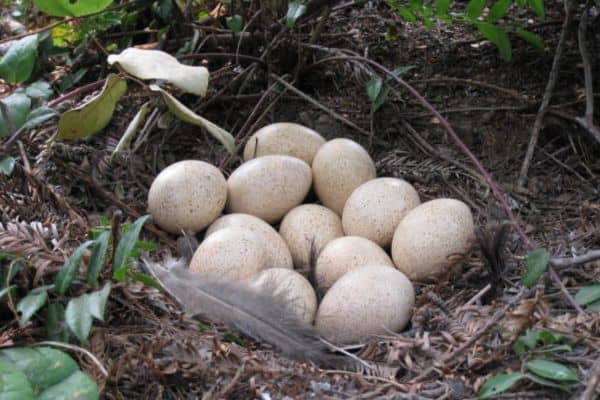
The Wild Turkey typically nests on the ground, often in areas with dense vegetation or underbrush that provides cover and protection. Females will lay a clutch of 8-15 eggs, which they will incubate for around 28 days.
During this time, the female will stay close to the nest and will only leave briefly to feed. Once the eggs hatch, the young will stay with the female for several weeks, during which time she will protect and care for them.
After the young are able to fly, they will form groups with other young birds and will stay together throughout the winter months. As they mature, males will establish dominance hierarchies and will compete for the attention of females.
Habitat
The Wild Turkey is a highly adaptable bird species that can thrive in a range of habitats, from forests and woodlands to agricultural fields and suburban areas. They prefer habitats with a mix of open areas for foraging and cover for protection from predators.
In forested areas, Wild Turkeys can be found in mature hardwood forests, particularly those with oak and hickory trees, which provide a good source of food in the form of acorns and nuts. In agricultural areas, they can be found in fields and pastures where they can feed on crops and insects.
During the winter months, Wild Turkeys will often gather in flocks and roost in trees at night for protection from predators.
Range
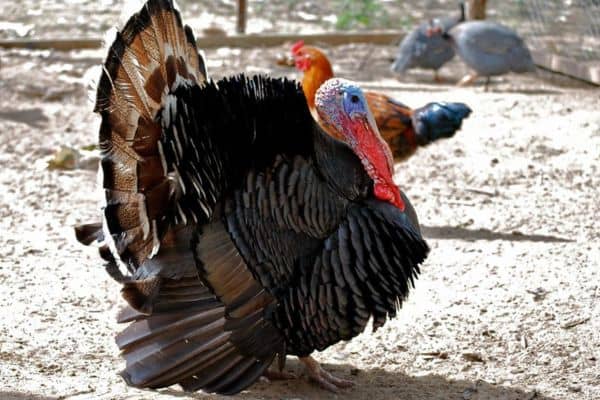
The Wild Turkey is not native to Hawaii, but it has been introduced to the islands on multiple occasions. Wild Turkeys have established a stable population on the Big Island of Hawaii since their introduction in the early 1960s for hunting purposes.
Conservation Status
The Wild Turkey is currently listed as a species of “Least Concern” by the International Union for Conservation of Nature (IUCN). This is due to its wide range and stable populations throughout much of North America.
However, the Wild Turkey’s populations have faced significant challenges from habitat loss and hunting pressure in the past, leading to declines in some areas. Conservation efforts, including habitat restoration and reintroduction programs, have helped to restore Wild Turkey populations in many areas.
Additionally, regulations on hunting and management practices have helped to maintain stable populations in many states. However, habitat loss and fragmentation remain significant threats to the species, particularly in urban and suburban areas.
Interesting Facts
1. Feathers can change color
The Wild Turkey’s feathers can change color depending on its mood, particularly the feathers on its head and neck. When a Wild Turkey is excited or angry, its head and neck feathers can change from blue to red and white, and the skin on its head and neck can become bright red or blue. This color change is caused by the movement of blood vessels in the skin, which can expand or contract depending on the bird’s level of arousal.
2. Official state game bird of Alabama, Massachusetts, and South Carolina
The Wild Turkey has been designated as the official state game bird in three U.S. states: Alabama, Massachusetts, and South Carolina. This designation recognizes the cultural and ecological importance of the Wild Turkey in these states, as well as the significant role that hunting and wildlife conservation play in their economies and traditions.
3. Excellent eyesight and hearing
The Wild Turkey has excellent eyesight and hearing, which allows it to quickly detect potential threats.
Frequently Asked Questions
1. What is the lifespan of a Wild Turkey?
The lifespan of a Wild Turkey is typically 3-4 years in the wild, but they can live up to 10 years in captivity.
2. How fast can a Wild Turkey run and fly?
Wild Turkeys can run at speeds of up to 25 miles per hour (40 km/h) and can fly at speeds of up to 55 miles per hour (88 km/h).
3. How do Wild Turkeys communicate with each other?
Wild Turkeys communicate with each other through a range of vocalizations, including clucks, purrs, yelps, and gobbles.
